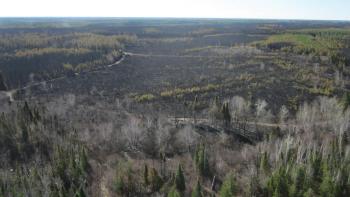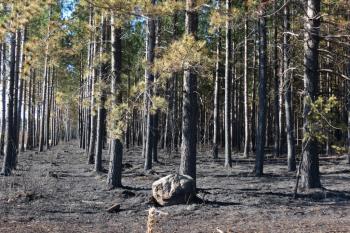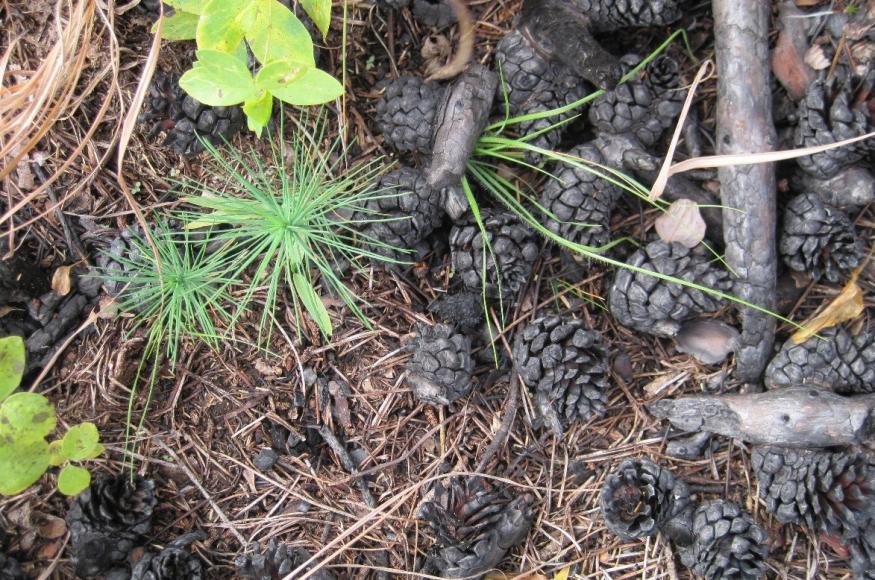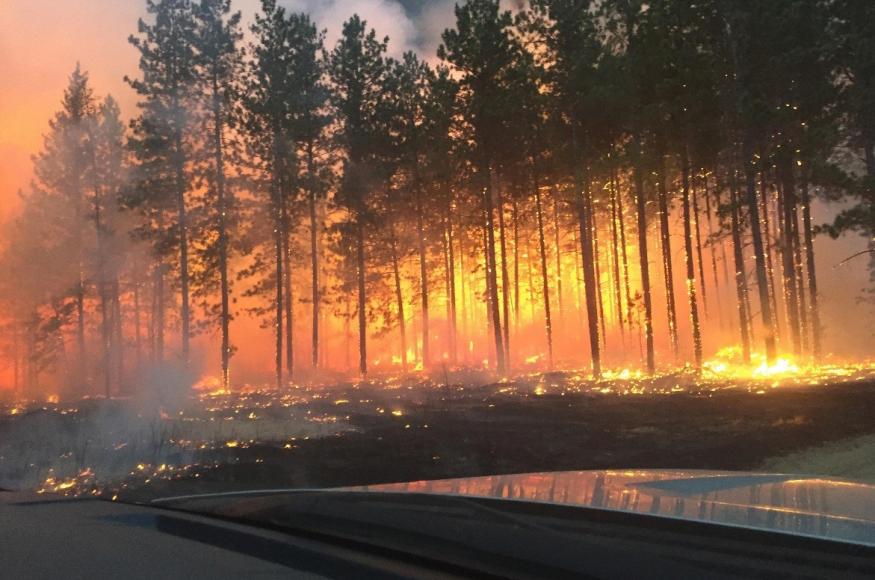Project Area
 In April 2015, the Palsburg fire burned approximately 4,447 acres on a beach ridge area of the Beltrami Island State Forest in Lake of the Woods County. The majority of the burned area is dominated by jack pine and red pine, and classified as the northern dry-sand pine woodland community (FDn12), which has a state conservation status rank of imperiled (S2).
In April 2015, the Palsburg fire burned approximately 4,447 acres on a beach ridge area of the Beltrami Island State Forest in Lake of the Woods County. The majority of the burned area is dominated by jack pine and red pine, and classified as the northern dry-sand pine woodland community (FDn12), which has a state conservation status rank of imperiled (S2).
Management Goals

Short-term goals for this area include capturing timber value of the burned trees, managing forest health risks (e.g. bark beetles, Diplodia), and preparing sites for subsequent silvicultural treatments. Longer-term (50 year) goals for the burned areas include regenerating the site to a mix of suitable tree species (incorporating climate change considerations), continuing to provide a sustainable yield of forest resources, and managing the age and structure of these stands to match larger landscape goals (following Section Forest Resource Management Plan recommendations). Additional goals for this area include Department priorities to maintain the rare native plant community (FDn12), and to protect rare species populations in the area.
Climate Change Impacts
Challenges and Opportunities
Challenges
Opportunities
Adaptation Actions
Project participants used the Adaptation Workbook to develop several adaptation actions for this project. They found that many of the actions already planned for this area have great win-win benefits for climate adaptation, including:
Monitoring
The presence and condition of rare species records across the burned area were re-confirmed following green-up immediately after the fire (May 2015) and specific, site-level management recommendations were provided to field staff. Additional surveys of these species (including Botrychium spp.) will occur opportunistically or as needed to provide management recommendations for areas containing these features.


